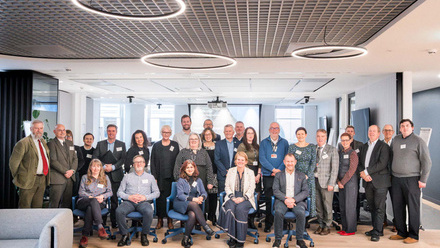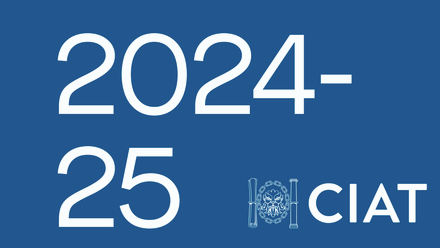Four key takeaways from the CIC Leadership Conference
It’s always a pleasure to get together with friends and colleagues from the CIC (the umbrella body for professional institutes such as ours), to carefully reflect on some of the pressing issues facing our industry. This year’s Members Conference, which took place earlier in May, was no exception.
The conference theme was “Prioritising Building Safety”, an apt choice in light of the publication of the final report of the Grenfell Tower Inquiry last year. Across presentations and speeches from Dame Judith Hackitt, Sandi Rhys Jones (CIOB Past President), Hywel Davies (CABE), Anthony Taylor (Building Safety Alliance) and Peter Caplehorn (Construction Products Association), we were challenged to reflect on how far the sector has come since 2017, and on how much more remains to be done, to ensure that a tragedy like the Grenfell Tower Fire can never happen again.
Many of the issues touched on at the conference are already the focus of active work among CIAT’s membership and the team at City Road. But rather than going into detail on work in progress, here are four top takeaways that stuck with us.
- Telling a better story
Most of the sessions at the conference were rooted in the practical question of how we drive forward building safety. But before any of that, we heard from Sandi Rhys Jones about the need for the sector to tell better stories. Sandi encouraged us to celebrate our successes – both the big ones, and perhaps more importantly, the small ones. In a sector which is constantly moving onto the next project, we rarely pause to take stock, appreciate the wins and look for lessons. But this is something that can benefit everyone, in any walk of life. Bringing discussions back to the built environment, Sandi challenged us to think about how the stories we tell impact on our ability to win over clients, persuade government ministers to change track on policy, or attract more diverse talent into built environment careers. Our roles offer so much potential to deliver positive impact, but all too often this potential is hidden behind a perception that the built environment sector is stressful, dirty and unsafe. We have the potential to change that narrative. - Moving from building safety to building quality
Over the last eight years, there has rightly been an emphasis on building safety across the sector. This is a fundamental foundation, but it is not sufficient to deliver great places that people want to live. We should not tolerate a race to the bottom in price and quality, where we do the bare minimum required by regulations, even if this delivers buildings which are “safe”. Instead, we should focus on highlighting the value of investing in quality in all aspects of the built environment. That means buildings that are heat and energy efficient, comfortable, healthy and contribute to a sense of place. These are the places which will be loved by people and will stand the test of time. Naturally, this is an area where Architectural Technology shines as a discipline. But we need to tell that story with greater confidence and clarity. - Stronger than the sum of our parts
With so many different professions and organisations, it is inevitable that our sector will include a range of approaches and priorities at any one time. But where those priorities align, we should seek to deepen collaboration between professional institutes and sector bodies, whether we are creating CPD resources to enhance professional practice, providing access to resources, advocating for policy change, or promoting built environment careers. Working together in this way will enable us to imbed a collaborative nature throughout the industry. Positions reached through consensus, which have been challenged and considered from different angles, will inevitably be stronger and more robust. And Government will take a more favourable view of a sector which is seen to be working together to address shared challenges. - Leading from the front
At present, the onus is squarely on CIAT and our fellow Professional Institutes to support members to work more effectively, to higher standards, delivering better outcomes for clients. CIAT’s Principal Designer (Building Regulations) Register is a great example of leadership from the front. The Institute has not been required to establish a register, and there is (currently) no regulatory requirement for Principal Designers to be registered in order to demonstrate competence. But a register like this can play an important part in giving clients and the public confidence in the skills, expertise, knowledge and experience of Members leading design projects. And if, as a sector, we are not seen to be actively improving standards of building safety, quality and performance, there is every chance that we should expect more onerous requirements and regulatory oversight to be imposed on us. So if you are taking on PD (BR) work, and are not on the Register, we strongly encourage you to apply here, and if there are areas where you need extra support, we want to know about it. That way, we can help you shape the great buildings and places we all want.






